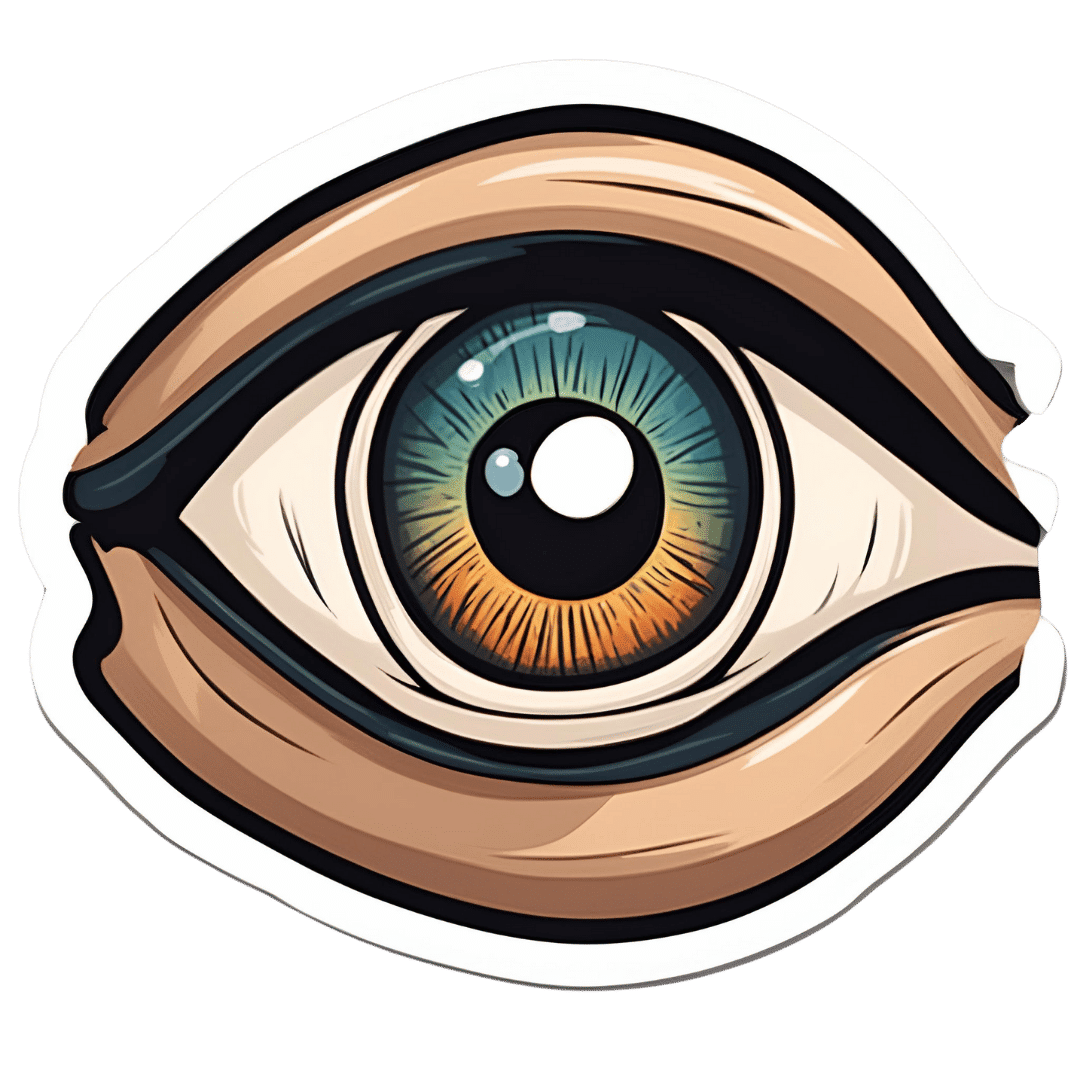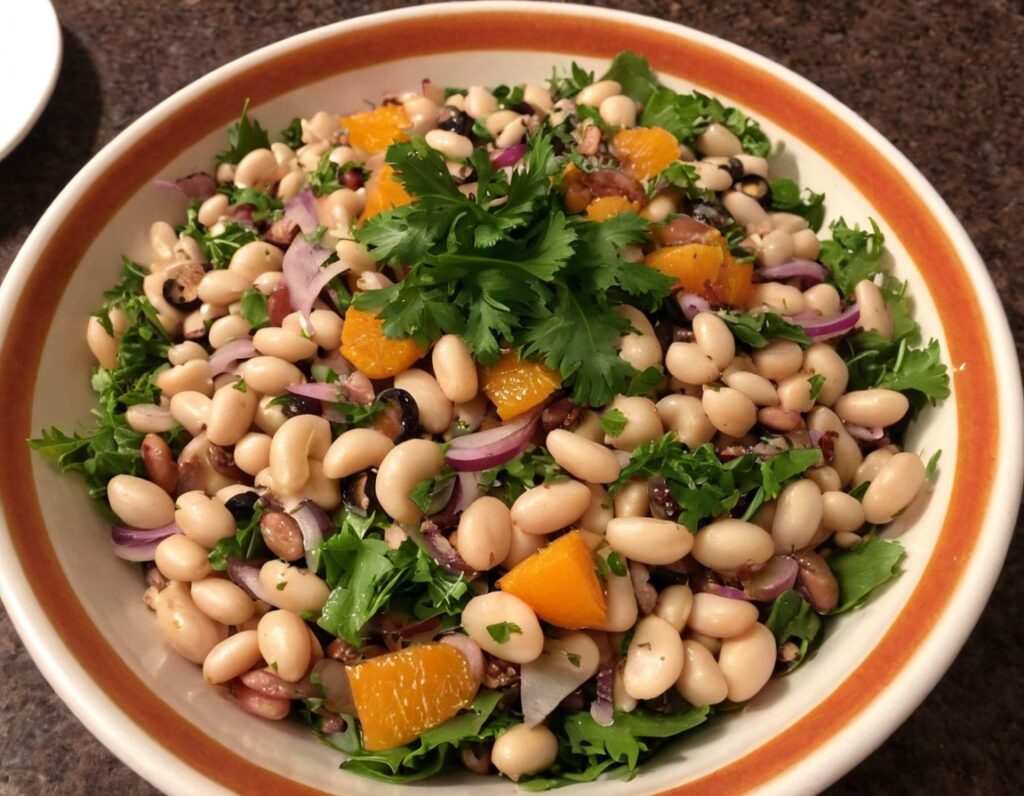
How To Process Rage, Healthily
10almonds is reader-supported. We may, at no cost to you, receive a portion of sales if you purchase a product through a link in this article.
We’ve written before about managing various emotions, including “negative” ones. We put that in “scare quotes” because they also all have positive aspects, that are just generally overshadowed by the fact that the emotions themselves are not pleasant. But for example…
We evolved our emotions, including the “negative” ones, for our own benefit as a species:
- Anger keeps us safe by protecting us from threats
- Stress keeps us safe by making sure we take important situations seriously
- Disgust keeps us safe by helping us to avoid things that might cause disease
- Anxiety keeps us safe by ensuring we don’t get complacent
- Guilt keeps us safe by ensuring we can function as a community
- Sadness keeps us safe by ensuring we value things that are important to us, and learn to become averse to losing them
- …and so on
You can read more about how to turn these off (or rather, at least pause them) when they’re misfiring and/or just plain not convenient, here:
While it’s generally considered good to process feelings instead of putting them aside, the fact is that sometimes we have to hold it together while we do something, such that we can later have an emotional breakdown at a convenient time and place, instead of the supermarket or bank or office or airport or while entertaining houseguests or… etc.
Today though, let’s talk about how to actually process the first one, anger. Or, in its extreme form, rage.
All the rage
We’re going to use this word because although anger and rage may be considered synonyms, the latter conveys an extra meaning, which is that it is all-consuming on an emotional level.
- A person experiencing anger may write an angry message in response to a news article they read online
- A person experiencing rage more likely threw their phone down and cannot compose a message at this time
There are two common ways that people will try to deal with feelings of rage, and both of them can cause problems:
- The first is repression, or suppression, more colloquially called “keeping a lid on it” or, less favorably, “bottling it up”.
- The second is expression, or acting out, and may involve such things as screaming one’s rage or punching a pillow.
Let’s look a those one by one…
Bottling it up
As we mentioned earlier, sometimes we must put our feelings aside for a moment, but if we never get back to them, never process them, then either they will simply cause further problems down the line, which come in two main forms:
- An unplanned explosion when something becomes too much (a person “finally losing it” upon being subjected to “the last straw”)
- Somatic (bodily) expression of the unprocessed emotions (physical tension, autoimmune disease, heart problems, ulcers, and so forth)
Letting it out
Punching a pillow, screaming, breaking disposable things (e.g. bottles, plates, etc willingly sacrificed to one’s rage) are certainly more healthy than, saying, beating one’s partner, or child, or taking other such violent actions against others.
It’s also more healthy than the self-harm that some may otherwise engage in when one’s rage is directed towards oneself.
However, it’s still not great, because often it will only enhance the feeling of the rage, without actually processing, which can exacerbate the underlying emotion.
Anyone who’s had a violently abusive partner, or parent, will be able to attest that that person did not become any safer, and certainly not any more emotionally healthy, after a violent outburst.
So, what to actually do about it?
Embodied awareness
The trick is to experience the rage, and observe that feeling without getting lost in it.
See also: Answering The Most Difficult Question: How Are You? ← this is important, because sometimes it’s easy to get so caught up in an emotion that we are effectively nothing more than a conduit for the emotion, rather than a conscious mind experiencing an emotion—which latter is what we need to be.
Another good tool for this (i.e. in addition to the method we described in the above-linked article, which we do heartily recommend checking out) is the RAIN tool with which you may already be familiar, and/but now we’ll discuss in the specific context of rage:
- Recognizing: becoming aware of what you are experiencing; a lot of the time we go through life in autopilot, but for this we’re going to need to “snap out of it” for a moment and be fully awake to what we are experiencing.
- Accepting: “OK, so, I’m experiencing rage”. There’s no point in denying it, or being defensive about it; these things won’t help you. For now, just accept it.
- Investigating: “Why am I experiencing this rage?” Maybe there is an obvious reason, maybe you need to dig for a reason—or dig deeper for the real reason. Often it may be because of something going against some strongly-held value, or else it might be piquing some insecurity that we have. Important: your feelings may be rational or irrational. That’s fine. This is a time for investigating, not judging.
- Non-Identification: not making whatever it is you’re feeling into a part of you. Once you get too attached to “I am angry” etc, it can be difficult to manage something that has become a part of your personality; you’ll defend it rather than tackle it. Right now, it doesn’t matter how justified or righteous your rage is; you want to observe it, not to be it.
There are numerous possible outcomes here, and none of them are necessarily wrong. For example:
- You might realize you were overreacting to something that isn’t actually that big a deal in the grand scheme of things (in which case, you can probably move on from it now)
- You might expose (to yourself) a deep emotional wound you hadn’t previously paid attention to, and now you understand why you feel that way (in which case, you may want to explore that feeling more)
- You might find a desire to take some action to put the world to rights (in which case, this action could be a good idea or a terrible idea; for now, just observe the desire either way; you can decide whether it’s sensible to act on it later)
Here, Dr. Gabor Maté (author of “When The Body Says No“, and many other excellent books) talks about this, though he uses Recognize/Allow/Investigate/Nurture as the acronym, but it’s the same tool:
Click Here If The Embedded Video Doesn’t Load Automatically!
Where to go from there
In the case of the second item there, taking it to therapy may be a great idea if that’s an option that seems reasonable to you.
See: How To Prepare For Your First Therapy Session
If you prefer self-therapy, then here’s a good book to consider:
Healing Trauma – by Dr. Peter Levine ← it may not sound like this is relevant from the title, but we promise you it is; the main focus of the book is somatic experiencing and processing of emotions
If you intellectually consider that what you need is to let go of your anger/rage, but you’re not sure how, then check out:
To Err Is Human; To Forgive, Healthy: How To Forgive (And Why) ← this includes advice for if the person you need to forgive is yourself
Finally, as a catch-all resource, here is a great list of methods:
How Healthy People Regulate Their Emotions: Eight Things Mentally Healthy People Do
Take care!
Don’t Forget…
Did you arrive here from our newsletter? Don’t forget to return to the email to continue learning!
Recommended
Learn to Age Gracefully
Join the 98k+ American women taking control of their health & aging with our 100% free (and fun!) daily emails:
-
Exercising With Less Soreness!
10almonds is reader-supported. We may, at no cost to you, receive a portion of sales if you purchase a product through a link in this article.
An Ancient Sports Drink & Healing Potion, Now With Modern Science?
Ginseng has many health benefits, we talked about 8 of them in this previous edition of 10almonds:
…but we’ve somehow never yet done a Monday’s Research Review for it! We must do one, one of these days. For now though, it’s Saturday’s Life Hacks, and we’re here with…
Speeding up recovery after muscle damage
We talked about this topic before too:
Overdone It? How To Speed Up Recovery After Exercise
…which gives very good advice (including some supplements that help), but was published before the latest science that we’re going to talk about today:
A team of researchers all so very recently found that ginseng also reduces muscular fatigue and, importantly, hastens recovery of muscle damage caused by exercise.
And that’s not all…
❝It should also be noted that, by reducing fatigue, taking ginseng on a regular basis may also help reduce the risk of injury, particularly in the case of muscles or ligaments, which can in turn improve athletic performance.❞
This means that it can be taken regularly and prophylactically, as they found:
❝taking ginseng systematically for a long time can mitigate the response of the biological markers, mainly creatine kinase (CK) and interleukin 6 (IL-6), responsible for exercise-induced muscle damage and inflammation.❞
You may be thinking “isn’t creatine good?” and yes, yes it is:
Creatine: Very Different For Young & Old People
…however, creatine kinase is not creatine. Creatine kinase (CK) is an enzyme that affects the creatine (to put it in few words, without getting into the fascinating biochemistry of this). Now, it’s necessary for us to have some CK (or else we wouldn’t be able to do what we need to with the creatine), but elevated levels often indicate some sort of problem going on:
Approach to asymptomatic creatine kinase elevation
…so ginseng keeping those things balanced is a good thing.
The study
We’ve talked a lot about the findings and what they mean, but if you’d like to read the paper for yourself, you can read it here:
Effect of Ginseng Intake on Muscle Damage Induced by Exercise in Healthy Adults
Where to get ginseng
If you’d like to take ginseng as a supplement, then there are many ways to do so, with the most common being capsules or ginseng tea, which has an interesting and distinctive taste, and is very refreshing. Here are examples on Amazon, for your convenience:
Enjoy!
Share This Post
-
The Top Micronutrient Deficiency In High Blood Pressure
10almonds is reader-supported. We may, at no cost to you, receive a portion of sales if you purchase a product through a link in this article.
High blood pressure is often considered a matter of too much sodium, but there’s another micronutrient that’s critical, and a lot of people have too little of it:
The Other Special K
Potassium helps regulate blood pressure by doing the opposite of what sodium does: high sodium intake increases blood volume and pressure by retaining fluid, while potassium promotes sodium excretion through urine, reducing fluid retention and lowering blood pressure.
Clinical studies (which you can find beneath the video, if you click through to YouTube) have shown that increasing potassium intake can reduce systolic blood pressure by an average of 3.49 units, with even greater reductions (up to 7 units) at higher potassium intakes of 3,500–4,700 mg/day.
Potassium-rich foods include most fruit*, leafy greens, broccoli, lentils, and beans.
*because of some popular mentions in TV shows, people get hung up on bananas being a good source of potassium. Which they are, but they’re not even in the top 10 of fruits for potassium. Here’s a non-exhaustive list of fruits that have more potassium than bananas, portion for portion:
- Honeydew melon
- Papaya
- Mango
- Prunes
- Figs
- Dates
- Nectarine
- Cantaloupe melon
- Kiwi
- Orange
These foods also provide fiber, which aids in weight management and further lowers risks for cardiovascular disease. Increasing fiber intake by just 14g a day has been shown not only to reduce calorie consumption and promote weight loss, but also (more importantly) lower blood pressure, cholesterol, and overall health risks.
For more on all of this, enjoy:
Click Here If The Embedded Video Doesn’t Load Automatically!
Want to learn more?
You might also like to read:
What Matters Most For Your Heart? Eat More (Of This) For Lower Blood Pressure ← this is about fiber; while potassium is the most common micronutrient deficiency in people with high blood pressure, fiber is the most common macronutrient deficiency, and arguably the most critical in this regard.
Take care!
Share This Post
-
Fatty Acids For The Eyes & Brain: The Good And The Bad
10almonds is reader-supported. We may, at no cost to you, receive a portion of sales if you purchase a product through a link in this article.
Good For The Eyes; Good For The Brain
We’ve written before about omega-3 fatty acids, covering the basics and some lesser-known things:
What Omega-3 Fatty Acids Really Do For Us
…and while we discussed its well-established benefits against cognitive decline (which is to be expected, because omega-3 is good against inflammation, and a large part of age-related neurodegeneration is heavily related to neuroinflammation), there’s a part of the brain we didn’t talk about in that article: the eyes.
We did, however, talk in another article about supplements that benefit the eyes and [the rest of the] brain, and the important links between the two, to the point that an examination of the levels of lutein in the retina can inform clinicians about the levels of lutein in the brain as a whole, and strongly predict Alzheimer’s disease (because Alzheimer’s patients have significantly less lutein), here:
Now, let’s tie these two ideas together
In a recent (June 2024) meta-analysis of high-quality observational studies from the US and around the world, involving nearly a quarter of a million people over 40 (n=241,151), researchers found that a higher intake of omega-3 is significantly linked to a lower risk of macular degeneration.
To put it in numbers, the highest intake of omega-3s was associated with an 18% reduced risk of early stage macular degeneration.
They also looked at a breakdown of what kinds of omega-3, and found that taking a blend DHA and EPA worked best of all, although of people who only took one kind, DHA was the best “single type” option.
You can read the paper in full, here:
Association between fatty acid intake and age-related macular degeneration: a meta-analysis
A word about trans-fatty acids (TFAs)
It was another feature of the same study that, while looking at fatty acids in general, they also found that higher consumption of trans-fatty acids was associated with a higher risk of advanced age-related macular degeneration.
Specifically, the highest intake of TFAs was associated with a more than 2x increased risk.
There are two main dietary sources of trans-fatty acids:
- Processed foods that were made with TFAs; these have now been banned in a lot of places, but only quite recently, and the ban is on the processing, not the sale, so if you buy processed foods that contain ingredients that were processed before 2021 (not uncommon, given the long life of many processed foods), the chances of them having TFAs is higher.
- Most animal products. Most notably from mammals and their milk, so beef, pork, lamb, milk, cheese, and yes even yogurt. Poultry and fish technically do also contain TFAs in most cases, but the levels are much lower.
Back to the omega-3 fatty acids…
If you’re wondering where to get good quality omega-3, well, we listed some of the best dietary sources in our main omega-3 article (linked at the top of today’s).
However, if you want to supplement, here’s an example product on Amazon that’s high in DHA and EPA, following the science of what we shared today 😎
Take care!
Share This Post
Related Posts
-
The Exercises That Help Keep Breast Cancer At Bay
10almonds is reader-supported. We may, at no cost to you, receive a portion of sales if you purchase a product through a link in this article.
For women, our lifetime risk of being diagnosed with breast cancer is about 1 in 7, before we take into account any added risk or protective factors.
For men, it’s more like 1 in 556, which again, is before taking into account any added risk or protective factors.
Here’s a good place to start on improving those odds: How To Triple Your Breast Cancer Survival Chances
And for that matter, check out: 8 Signs On Your Breast You Shouldn’t Ignore
And for those concerned (or even just curious) about the pros and cons of menopausal HRT when it comes to breast cancer:
The Hormone Therapy That Reduces Breast Cancer Risk & More ← this is actually very important to understand, as otherwise it’s easy to accidentally self-sabotage and increase one’s overall mortality risk
So, what’s this about exercise and breast cancer?
There are two things to focus on
No, not those.
Well, yes, those, but also: aerobic exercise and resistance training.
A research team (Dr. Alice Avancini et al.) analysed data from 22 randomized controlled trials (total n=968 participants) that investigated the effects of exercise on various pro-inflammatory biomarkers (mostly interleukin variants, but also c-reactive proteins) that are known to increase breast cancer reoccurrence risk.
What they found was:
❝Exercise induced small to large significant reductions in IL-6 (SMD = -0.85; 95% CI = -1.68 to -0.02; p = .05) and TNF-α (SMD = -0.40; 95% CI = -0.81 to 0.01; p = .05) and a trend for a decrease in CRP.
When stratifying by exercise mode, trends toward reduction in IL-6 and TNF-α were observed for combined exercise, whilst changes were not generally affected by exercise program duration❞
The “combined exercise” mentioned?
Aerobic exercise and resistance training.
This is important, because as regular 10almonds readers may remember…
What Your Metabolism Says About How Aggressive Breast Cancer Is Likely To Be For You ← this makes a huge difference to survival chances
So, this study’s findings are very consistent with that, because:
- Aerobic training increases cardiovascular fitness, improving metabolism
- Resistance training increases muscle mass, improving metabolism*
*because muscle “costs” calories to maintain, prompting an increase in metabolism, whereas fat prompts our metabolism to slow, to conserve energy to face the obvious food shortage that must be coming
See also: Stop Cancer 20 Years Ago
Want to learn more?
Here’s the best book we’ve read on breast cancer survival:
The Smart Woman’s Guide to Breast Cancer – by Dr. Jenn Simmons
Take care!
Don’t Forget…
Did you arrive here from our newsletter? Don’t forget to return to the email to continue learning!
Learn to Age Gracefully
Join the 98k+ American women taking control of their health & aging with our 100% free (and fun!) daily emails:
-
Most People Over 50 Don’t Know This Core Activation Trick
10almonds is reader-supported. We may, at no cost to you, receive a portion of sales if you purchase a product through a link in this article.
Here’s a simple and effective trick to activate your core muscles, without the confusion created by a lot of more complicated explanations:
Prepare for a poking
The core includes up to 29 muscles (depending on how we count them) around the spine, pelvis, and torso. Activating these muscles improves stability and reduces injury risk during movement, but common advices about how to do so can be a bit overcomplicated and unhelpful, leading to confusion and/or incorrectly-done exercises.
Instead, he says: imagine someone poking your side—your natural reaction is to tense your tummy and glutes. This instinctive tension effectively activates your core, without you having to think about the various muscles involved or whether to push or pull your stomach this way or that.
Once you’ve got that, practice maintaining the core tension while breathing steadily in and out (don’t hold your breath!). Start by feeling the tension with your fingers. Then keep that contraction while breathing to build awareness and control.
Next, you can bring that into other positions and movements, to master it fully and make it a part of your natural way of holding yourself.
For more on all of this, plus visual demonstrations, enjoy:
Click Here If The Embedded Video Doesn’t Load Automatically!
Want to learn more?
You might also like:
Is A Visible Six-Pack Obtainable Regardless Of Genetic Predisposition?
Take care!
Don’t Forget…
Did you arrive here from our newsletter? Don’t forget to return to the email to continue learning!
Learn to Age Gracefully
Join the 98k+ American women taking control of their health & aging with our 100% free (and fun!) daily emails:
-
The “Yes I Can” Salad
10almonds is reader-supported. We may, at no cost to you, receive a portion of sales if you purchase a product through a link in this article.
Sometimes, we are given to ask ourselves: “Can I produce a healthy and tasty salad out of what I have in?” and today we show how, with a well-stocked pantry, the answer is “yes I can”, regardless of what is (or isn’t) in the fridge.
You will need
- 1 can cannellini beans, drained
- 1 can sardines (if vegetarian/vegan, substitute ½ can chickpeas, drained)
- 1 can mandarin segments
- 1 handful pitted black olives, from a jar (or from a can, if you want to keep the “yes I can” theme going)
- ½ red onion, thinly sliced (this can be from frozen, defrosted—sliced/chopped onion is always a good thing to have in your freezer, by the way; your writer here always has 1–6 lbs of chopped onions in hers, divided into 1lb bags)
- 1 oz lemon juice
- 1 tbsp chopped parsley (this can be freeze-dried, but fresh is good if you have it)
- 1 tbsp extra virgin olive oil
- 1 tbsp chia seeds
- 1 tsp miso paste
- 1 tsp honey (omit if you don’t care for sweetness; substitute with agave nectar if you do like sweetness but don’t want to use honey specifically)
- 1 tsp red chili flakes
Method
(we suggest you read everything at least once before doing anything)
1) Combine the onion and the lemon juice in a small bowl, massaging gently
2) Mix (in another bowl) the miso paste with the chili flakes, chia seeds, honey, olive oil, and the spare juice from the can of mandarin segments, and whisk it to make a dressing.
3) Add the cannellini beans, sardines (break them into bite-size chunks), mandarin segments, olives, and parsley, tossing them thoroughly (but gently) in the dressing.
4) Top with the sliced onion, discarding the excess lemon juice, and serve:
Enjoy!
Want to learn more?
For those interested in some of the science of what we have going on today:
- Three Daily Servings of Beans?
- We Are Such Stuff As Fish Are Made Of
- Chia: The Tiniest Seeds With The Most Value
Take care!
Don’t Forget…
Did you arrive here from our newsletter? Don’t forget to return to the email to continue learning!
Learn to Age Gracefully
Join the 98k+ American women taking control of their health & aging with our 100% free (and fun!) daily emails:








